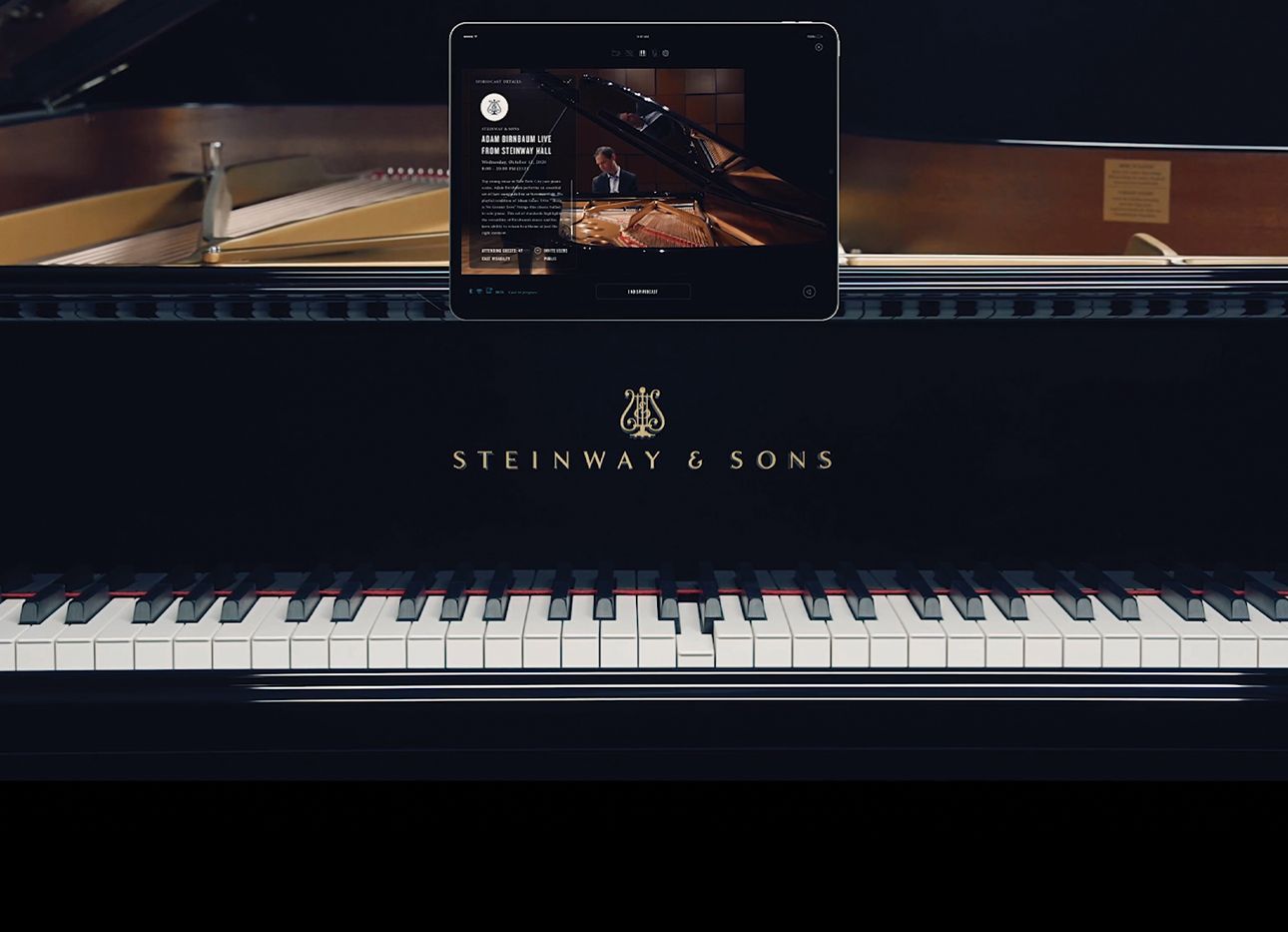
Steinway Brings Live Recitals to Your Living Room, Piano and All
“Man-made artifacts could always be imitated by men,” philosopher Walter Benjamin wrote in his 1935 essay “The Work of Art in the Age of Mechanical Reproduction.” “Mechanical reproduction of a work of art, however, represents something new.” That rings true when it comes to music, where our technology for reproducing the sounds and sights of live performances have become more and more novel. And yet, the instruments themselves have largely stayed the same.
Take the piano, with its predictable 88 keys and glossy black cover standing proudly at attention like the fin of an orca whale. But in 2015, 80 years after Benjamin’s proclamation, the piano-maker Steinway & Sons has reconceptualized the apparatus with Spirio, a state-of-the-art player piano that, with the help of an iPad (or other connected device), permits owners to play either the instrument or a library of performances by renowned international pianists. A few years later, the company unveiled Spirio | r, a version of the player piano that allowed pianists to edit, play back, search, and save their performances in high-resolution audio and video format.
Now, the technology has been enhanced further with Spiriocast, allowing for the ability to beam high-resolution audio and visual broadcasts in real time from one Spirio | r to another. A pianist can play a piano live for a public or private audience, and have their performance transmitted to a Spirio piano and its iPad. The system can also be used as a kind of Zoom for musicians, enabling practitioners to do things like hold auditions, teach lessons, and give master classes, or for listeners to take in remote live performances in a visceral, multisensory way.
While Steinway wasn’t sure if folks would embrace these advancements, Spirios currently account for nearly half of Steinway grands sold today. We recently spoke with Steinway’s CTO, Eric Feidner, about the technology, and how it broadens and enhances musical experiences in a moment when remoteness is the norm.
What makes Spiriocast different from music that is replicated via a recording and an advanced sound system?
You’re never going to completely replicate the live experience, because if you have the artist in the room, you have their personality, their charisma, and their presence. That’s not something we can reproduce, but it’s why we put such a huge emphasis on the integration of high-resolution data. We capture video and audio perfectly in sync with the live performance, so when they play together, it’s a seamless, fully synchronized experience at home.
When it comes to the piano-playing itself, if you hear a Spirio | r piano playing with your eyes closed, you would have no idea that the artist wasn’t actually playing there. There's nothing missing in terms of the musical, acoustical, or artistic experience of the piano.
There are a very broad number of experiences possible with Spiriocast—from a recital to teaching lessons one-on-one—and ones that haven’t even been thought of yet, because this is something that no one's really done before.
In terms of sound, what elements of live performance were most important for your team—which included concert-level piano technicians—to capture?
Our mission is to reproduce every nuance of an artist’s original performance: an extremely wide hammer-velocity range and all the nuances of proportional pedaling. We also wanted to reproduce artists’ personal playing styles, and varying techniques, in every conceivable genre. We did that through countless hours in the studio with hundreds of artists recording thousands of tracks of music. Any variation perceived by the artist between what they may have played and how it is reproduced leads us further on the quest for perfection. This is a perpetual process of continual improvement.
How might this technology change people’s relationships to live performance?
I don’t think it’s the kind of thing like, “Now that I have this in my home, I’m never going to have to go out again,” because owners are probably the same type of people who would want to go to Carnegie Hall or the Village Vanguard. It’s just another way to experience live music—a new kind of club.
For artists, it’s a new way for them to be able to sell their performances. Especially in the time that we’re in, there are many more challenges, obviously, with live performance venues. We’re opening up opportunities for artists to reach audiences they might not reach otherwise.
Why do you think so many people are drawn to the sound of a piano?
There is nothing like the majesty of a grand piano. Very few instruments allow a single artist to produce such a broad musical experience, from the most intimate and delicate melodies to thundering orchestral fortissimos.
The quest to reproduce the experience of a live piano performance in the traditional audio world is a bit of a holy grail. The acoustics of the Steinway are probably the most challenging of any instrument to try to capture in this way. With Spirio, we are literally reproducing the actual acoustic experience on a real Steinway—it is the “absolute sound.”